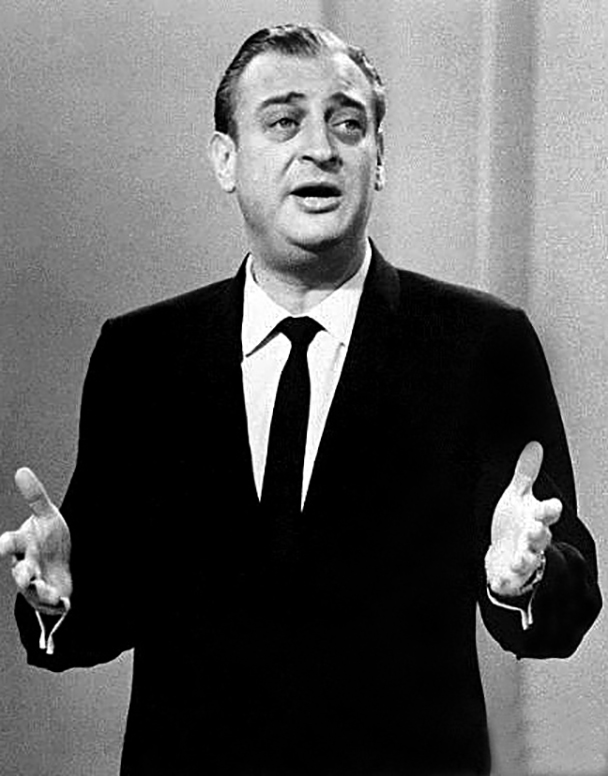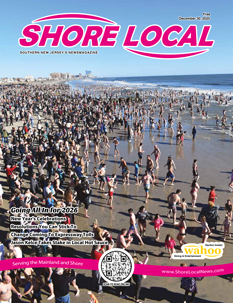It took comedian Rodney Dangerfield about 40 years to get some respect.
As Jack Roy, the first professional name taken by the man born Jacob Cohen, he worked every third-rate nightclub imaginable, and for years sold aluminum siding to finance his dream of making it big in showbiz.
In a new Dangerfield biography, “Nothin’ Comes Easy,” written by celebrity biographer Michael Seth Starr, we learn how and why this sad, innovative, unique and funny man finally hit the big time, a big time that included some rarely-reported ties to Atlantic City.
“I had to tell jokes,” he told a reporter in his later years. “I had to write them and tell them. It was like a fix, like I had the habit, you know?”
That, perhaps, is the reason why, after having only middling success as Jack Roy, and after being out of the business for more than a dozen years, he decided to give show business another try at age 40, an old age, at least for a comic.
The beginning of the real big time for Jack Roy came when he changed his name to Rodney Dangerfield.
There are several stories about how the Dangerfield name came about, but the most likely one traces to a character of the same name depicted on a 1941 episode of the “The Jack Benny Program,” a radio show. The name appealed to Jack Roy. It made him sound more like a schlepper, which was the image he wanted to cultivate.
After a slow start as Rodney, by the early 1960s he was playing the better rooms, doing some guest spots on television, and in 1966 played the prestigious Copacabana nightclub in New York City.
The real beginnings of stardom happened in 1967 when he was booked on “The Ed Sullivan Show.” When explaining, in later years, why he was such a hit on the Ed Sullivan program, he said, “My image did it. The image of a guy in whose life nothing goes right. That’s Rodney Dangerfield. And I do everything I can to feed that image.”
What finally did it for the Dangerfield fame express was the “no respect” line, which he first used in clubs around 1969 and on “The Tonight Show” Starring Johnny Carson. He was on his way at long last, at 49 years old.
Dangerfield parlayed his fame into ownership of a popular New York nightclub, which remained open from 1969 until 2020. He released his first comedy album, “I Get No Respect,” in 1970 and launched an impressive motion picture career that started with 1980 film, “Caddyshack.”
Along the way, he broke new ground. He was a pioneer of cable television and his HBO specials were among the first of their kind on cable. He was the first major show business figure to use the internet as a means of promotion with the Rodney Dangerfield website.
He was also proud of the fact that he nurtured and helped promote a slew of young performers including Jim Carrey, Rosanne Barr, Sam Kinison and Andrew Dice Clay.
Because he never wanted to stray too far from his Dangerfield’s nightclub in New York, it would seem that Atlantic City, from the time gaming was legalized, was made for him. However, on the weekend that Resorts International opened in May of 1978, Rodney Dangerfield could be found performing at the long-gone Sheraton Deauville on Brighton Avenue and the Boardwalk. His first known appearances at Resorts were for a full week in September of 1982.
It’s been reported that he was pulling down $25,000 per performance at Resorts. There were also rumors at the time that Dangerfield bought a home in the Chelsea section of Atlantic City.
In 1984 the Sands lured the comic away from Resorts with an exclusive, two-year contract. His first Sands performance was in February of 1985. He returned that summer for a week and performed frequently during the fall.
In an effort to explain the loss of Dangerfield as a Resorts contract player, a Resorts spokesperson claimed that “Dangerfield was not strong with the high rollers. He’s very strong with the youth market.”
Tom Cantone, then Sands’ vice president, disagreed.
“He’s the perfect example of the use of entertainment as a casino marketing tool,” Cantone told the Press of Atlantic City at the time. “What it boils down to is Rodney brings in the casino players.”
Though he was one of the biggest stars in the business, there were some career missteps through the years. One was his move from the Sands to the Golden Nugget in 1986. His stint there lasted for exactly one weekend in early October. He simply wasn’t right for the room.
“He was under an extended contract with us,” Nugget owner Steve Wynn said at the time. “But it was mutually agreed that his presentation was not what our audiences had come to expect from us.”
Dangerfield’s people only said, “Steve’s assessment was wrong. Rodney didn’t like the room so we got out.”
As consistently hilarious as he was, Dangerfield took his work seriously. This is corroborated by several stage managers and bandsmen who worked his shows at Resorts and the Sands.
A week or so prior to an engagement, the comic’s office would send out a cassette tape to the stage manager and bandleader detailing exactly how the show should go. On the tape, which can be heard in its entirety on YouTube, Dangerfield is out of character and totally serious.
“Hi, this is Rodney,” is how the tape begins. “After video is shown (a career montage) for three-and-a-half minutes, there is a drum roll. On drum roll, I’m offstage. I will say the line, ‘I tell yah, I don’t get no respect at all!’ Immediately, drummer stops roll and band picks up music at letter ‘A’ while I make my entrance. Band plays until I give you a direct cutoff. The music is always played loud, fast, and with high energy.”
Indeed, comedy is a serious business.

On May 25, 2004, Dangerfield’s surprisingly candid but thoroughly entertaining autobiography, “It’s Not Easy Being Me,” was published. Though in poor health, he still went on the road to promote the book.
On July 6, he did an interview with Terry Gross of National Public Radio’s “Fresh Air.” During that interview, Dangerfield recalled his first-ever appearance in Atlantic City.
“In fact in 1942, I once did a show with Al Jolson,” he told Gross. “I was a kid, 21 years old, in Atlantic City. Jolson was doing a benefit show there and asked me to go on and do five minutes to warm up the audience.” And warm them up he did, as Jack Roy.
On Oct. 5, 2004, just three months after he spoke to Terry Gross, Rodney Dangerfield died. He was 82 years old. He is buried at Pierce Brothers Westwood Village Memorial Park & Mortuary in Los Angeles. His tombstone reads: “RODNEY DANGERFIELD. There goes the neighborhood.”
Even in death. No respect.
Bruce Klauber is the author of four books, an award-winning music journalist, concert and record producer and publicist, producer of the Warner Brothers and Hudson Music “Jazz Legends” film series, and performs both as a drummer and vocalist.













